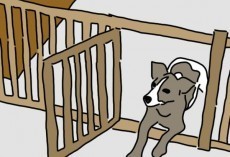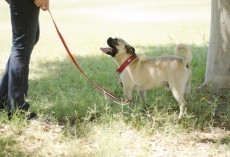What we are sincerely hoping for is a great relationship between our dogs, new and old. It comes down to a calm introduction and management of whatever issues that might arise. Check out the following:
Introductions
•Leave your current dog at home when you pick up your new dog. One of the worst things you can do is to just throw the two of them together in your car and hope for the best!•Introduce your dogs on neutral territory, like on a short walk through your neighborhood, in a nearby park or in a friend’s yard. Have two people, one to handle each dog, while keeping the dogs on leashes.
•To minimize tension, try to keep the dogs’ leashes loose so that they’re not choking or feeling pressure on their throats.
•Don’t force any interaction between the dogs. If the dogs ignore each other at first, or if one dog seems reluctant to interact with the other, that’s okay. Give both dogs time to get comfortable. They’ll interact when they’re ready.
•Make the introduction positive and light-hearted. As the dogs sniff and get acquainted, encourage them in a happy tone of voice. At first, allow just a few seconds of sniffing. Then gently pull the dogs away from each other and let them walk around with their handlers. After a minute or two, you can lead the dogs back together and allow another several seconds of sniffing. These brief greetings help keep the dogs’ interactions calm and prevent escalation to threats or aggression. You can also interrupt their interactions with simple obedience. After a brief sniff, lead the dogs apart, ask them to sit or lie down, and then reward them with treats.
•Closely observe the dogs’ body language. Their postures can help you understand what they’re feeling and whether things are going well or not. Loose body movements and muscles, relaxed open mouths, and play bows (when a dog puts his elbows on the ground and his hind end in the air) are all good signs that the two dogs feel comfortable. Stiff, slow body movements, tensed mouths or teeth-baring, growls and prolonged staring are all signs that a dog feels threatened or aggressive. If you see this type of body language, quickly lead the dogs apart to give them more distance from each other. Again, practice simple obedience with them individually for treats, and then let them interact again—but this time more briefly. Please see our Canine Body Language article for illustrations of dogs showing what various feelings look like in dog body language.
•Once the dogs’ greeting behaviors have tapered off and they appear to be tolerating each other without fearful or threatening behavior, you’re ready to take them home. Before you take them inside, walk them together around your house or apartment building.
•Be patient. Bringing a new dog home requires that everyone make some adjustments, especially your current pets. And it will take time for your dogs to build a comfortable relationship.
The above is a wonderful way to get the two dogs to know one another. But eventually you’ll have to manage the pooches at home. If you go over to ASPCA they will give you some great ideas on how to manage your dogs, particularly during those critical first two week at home.
Just remember a dog, especially an older pup, needs his own space. Be sure to give them their own water and food bowl. And maybe even a little space for the original to go off and lay down, away room the new pooch.
Eventually, they will become easy with one another and life will be good. Just give it time and some patience.











Alyssa Tina
- Edit
Greg Stewart